Celebrity designer Michael S Smith is a genius at creating spaces that balance classic styles from the distant past (you have him to thank for the suzani trend that swept the nation) with contemporary practicality and comfort. His roster of A-list clients goes on and on and, after he was appointed by President Obama to the Committee for the Preservation of the White House, includes a certain First Family. We sat down with Smith in his L.A. offices to see where the magic happens, find out what advice he has for budding designers, and get his take on decorating dos and don’ts.

The office entryway is lined with a set of five European painted wallpaper panels purchased at Christie’s.
How does your typical workday begin?
“It starts at around 6:30 a.m. I get up and do research for a good hour, reading newspapers and various things. I tend to get tons of emails from Europe, and I try to get through all of those first thing in the morning to see what’s generally going on. There’s really no such thing as a typical workday for me because I travel so much, but my morning beverage of choice is coffee, and lots of it.”
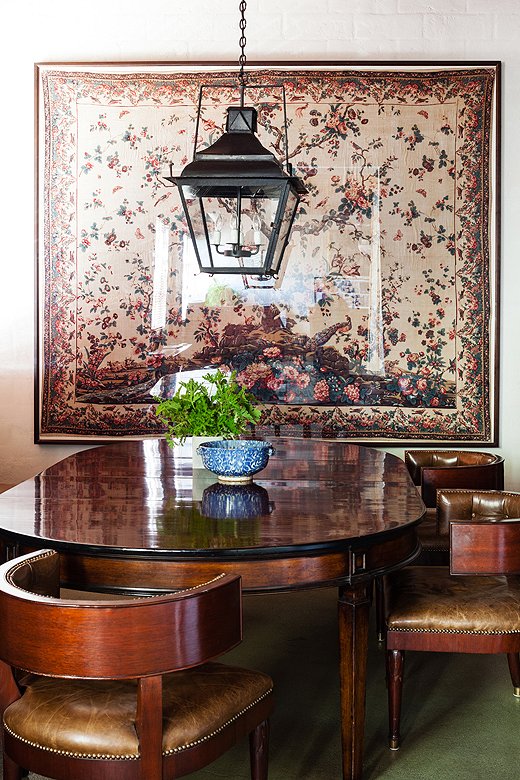
This gorgeous dining area is where Smith staffers generally gather for lunch. The framed document on the wall is part of Smith’s personal collection and was the inspiration for the Tree of Life pattern in his Jasper fabric line.
What was your first design project?
“I helped my parents’ friends when I was 17, which is kind of insane, but I guess I just knew what I wanted to do from the get-go.”
Is there a secret to your success?
“The one thing that I really had going for me is that I’m decisive, which has allowed me to execute a lot of things at one time. Also, I try not to be fearful of making a mistake. I think there’s a lot of stuff in this business that gets screwed up, and it’s really important to remain focused and not get tripped up.”
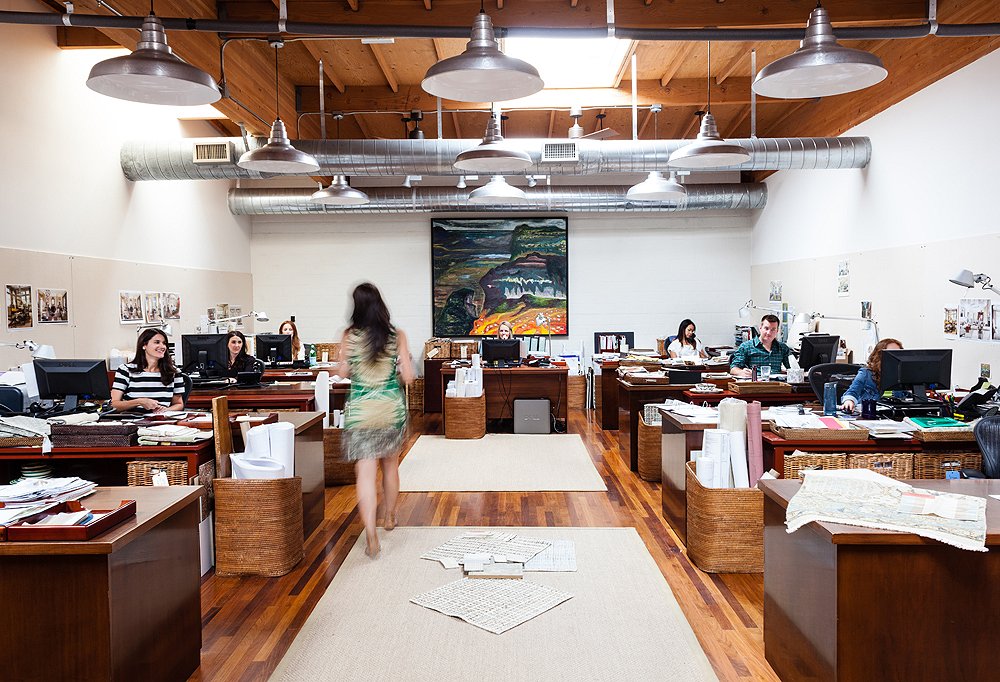
The building was a warehouse in a previous life, hence the industrial look. Staffers use polished-looking rattan baskets to keep everything from blueprints to fabric swatches to pieces of tile neat and tidy.
What type of people do you like to surround yourself with at work?
“People who are calm. I generally like to bounce things off everyone because I’m intrigued by what they all have to say. There are those people you trust and those maybe you don’t, but I think everyone’s opinion is informative in some way.”
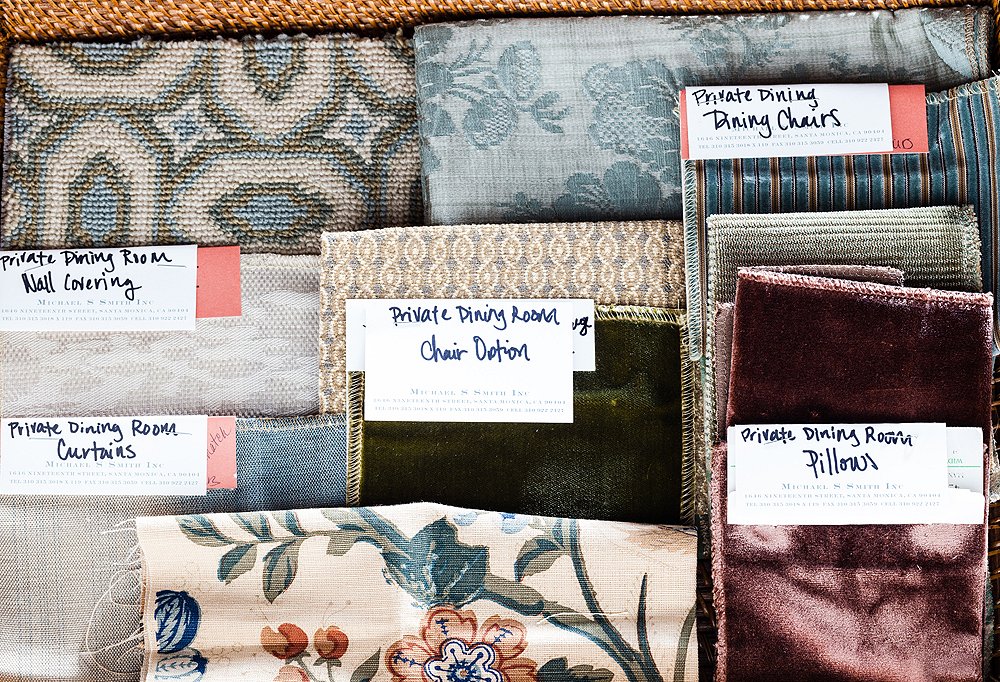
Smith’s team uses baskets to present design schemes for projects in the works and to ensure that fabrics and materials being used look good together.
Do you have any advice for interior designers just starting out?
“I think that most designers do not work for other people long enough. I worked for other people for a long time, and for a variety of people, and really learned how to make mistakes, whether it was a sofa that didn’t fit through the door or some other piece that didn’t fit in an elevator. There are people who are self-taught and unbelievably talented, so this isn’t a hard-and-fast rule, but because there are no qualifications in a sense to become a designer, people go into it without enough nuts and bolts. It’s not about aesthetic honing, it’s about business honing.”
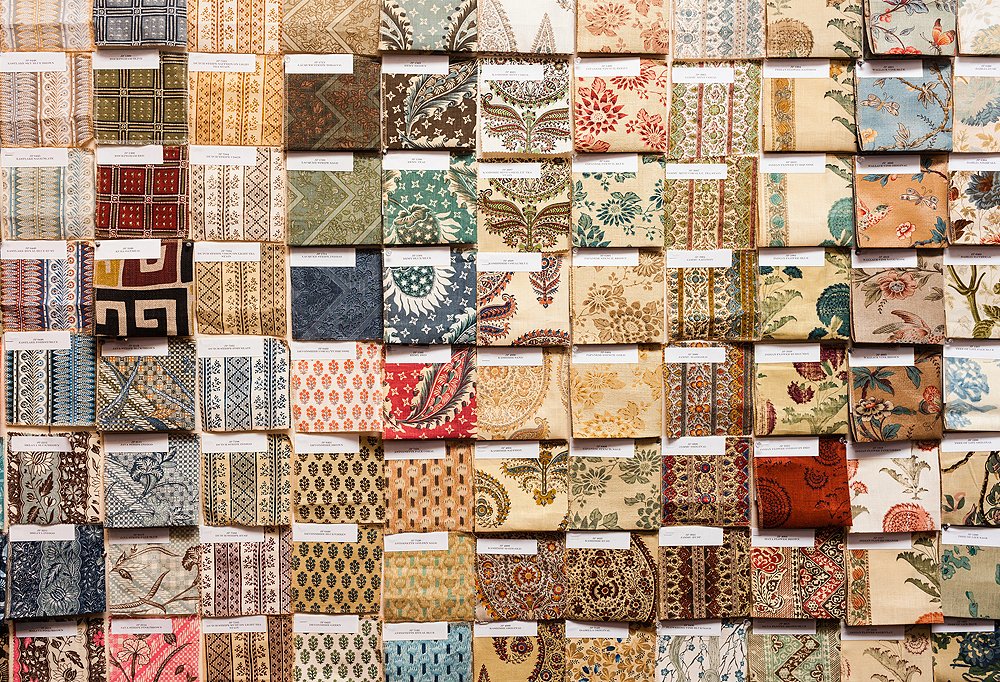
A wall of swatches from Smith’s Jasper line of fabrics.
Why did you set up your offices in L.A. as opposed to New York?
“I’m originally from California, and I just feel like I can get a lot of stuff done here and be very focused. I generally think it’s an easier place to work. You also have space here.”
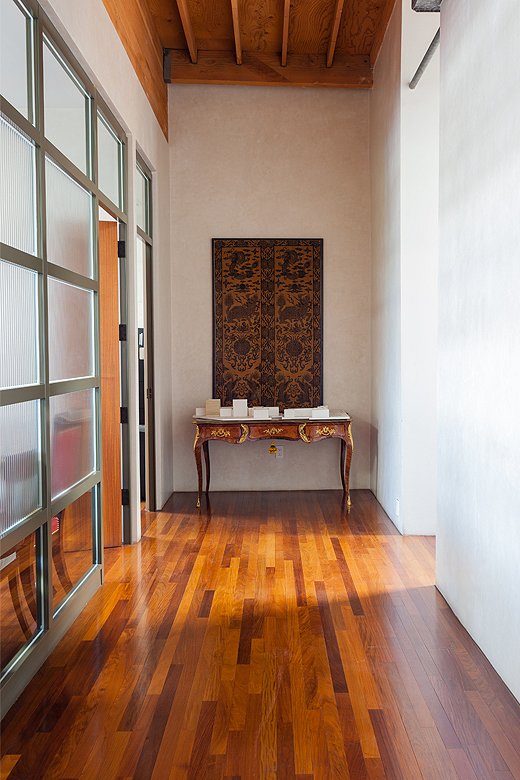
In the hallway leading to the main conference room, a 19th-century Chinese panel hangs above an antique desk.
Do you have a design credo?
“Know it before you sell it. If you’re going to sell expensive antique carpets, it’s a good idea to know a lot about them. In design, some of it is common sense, like don’t specify wool fabric for a house in Hawaii, but as your choices become more involved in terms of time and financial investment, I think you need to up your level of knowledge and expertise as you go.”

A model of one of Smith’s design projects that includes every last detail of the space, including to-scale renderings of the type of molding he planned to use in each room.
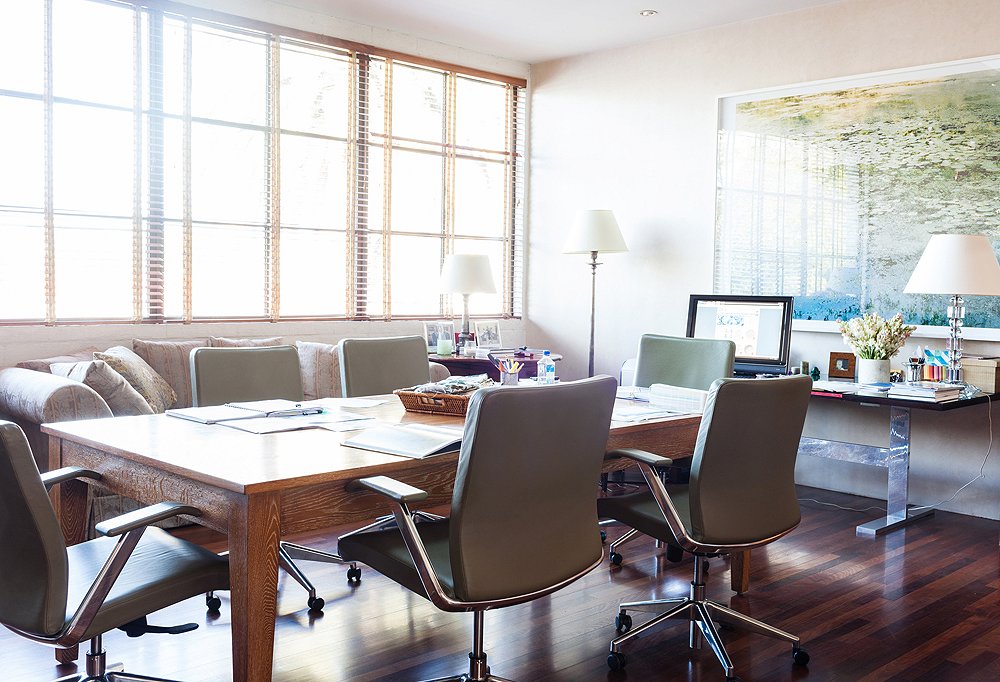
The main conference room doubles as Smith’s private office so that he can easily swivel around for meetings.
Where do you typically start when decorating a room?
“The obvious thing is the carpet, but first you have to decide what kind of carpet construction is best for the space.”
What’s your approach to accessorizing?
“I like rooms that evolve over time, so I always want spaces to be slightly underdone in terms of accessories. Your kid might make something out of clay that you want to put on display, or you might buy something on a trip. Nothing should be so set that you can’t change it.”
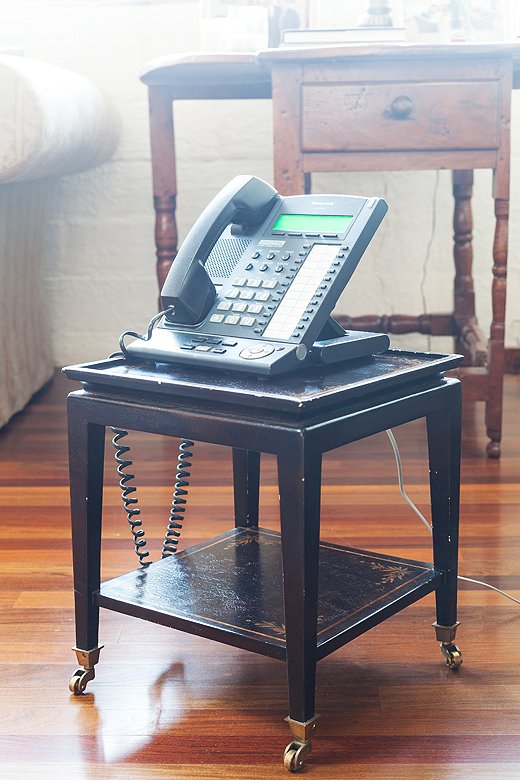
Smith’s office phone sits atop an antique telephone table to ensure it can keep up with his swiveling from computer to conference table throughout the day.
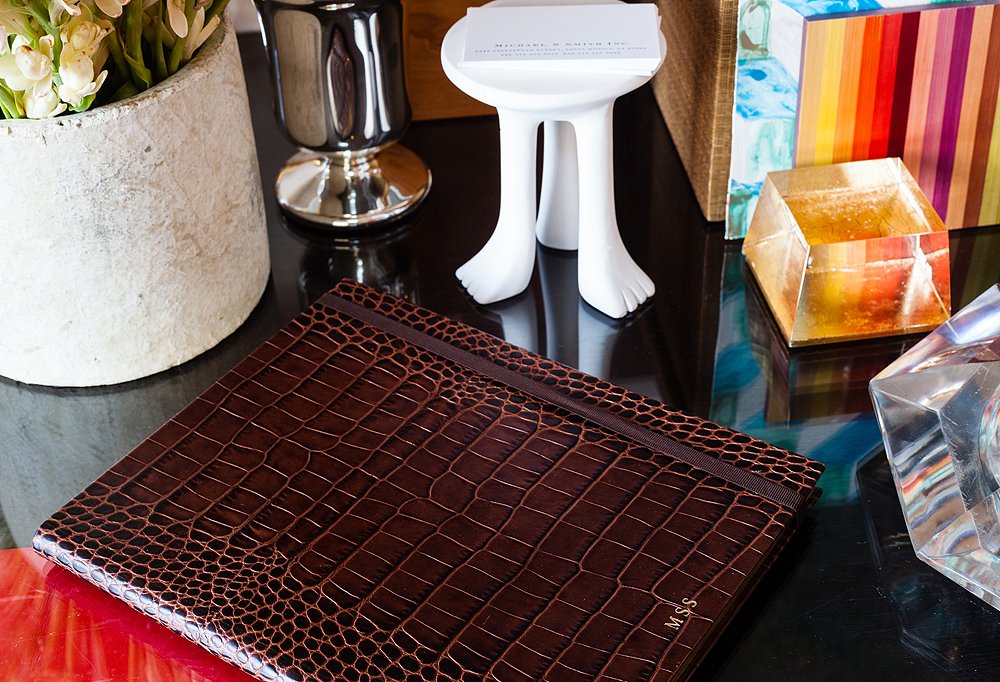
A crocodile Smythson notebook with Smith’s initials is used for jotting down appointments and notes, while a mini John Dickinson table keeps business cards easily accessible.
What do you think is the most common decorating mistake?
“The idea that rooms should be structured around a theme. It used to be Santa Fe, then it was country cottage, and now it’s Belgian. People feel the need to make these consistent decisions that are not necessarily personal to them or that feel inorganic to the space or to the person living there.”
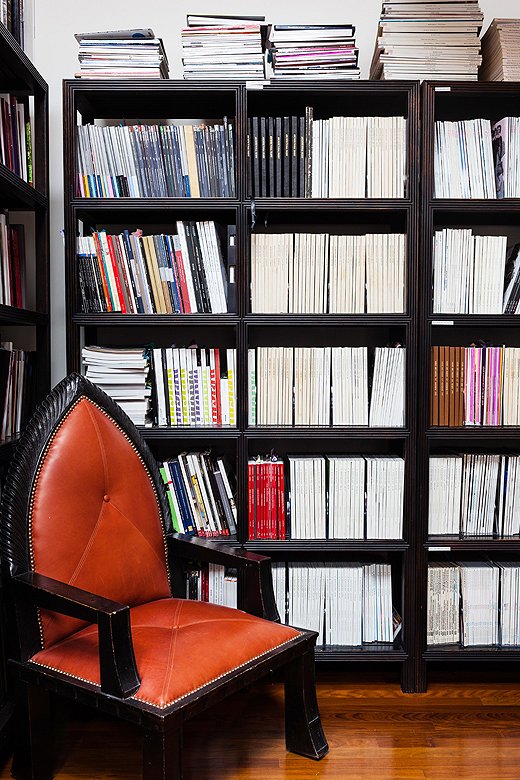
The Smith offices boast a serious periodical reference library, which includes rows of auction catalogs from Christie’s and issues of Architectural Digest dating back to the ’70s.
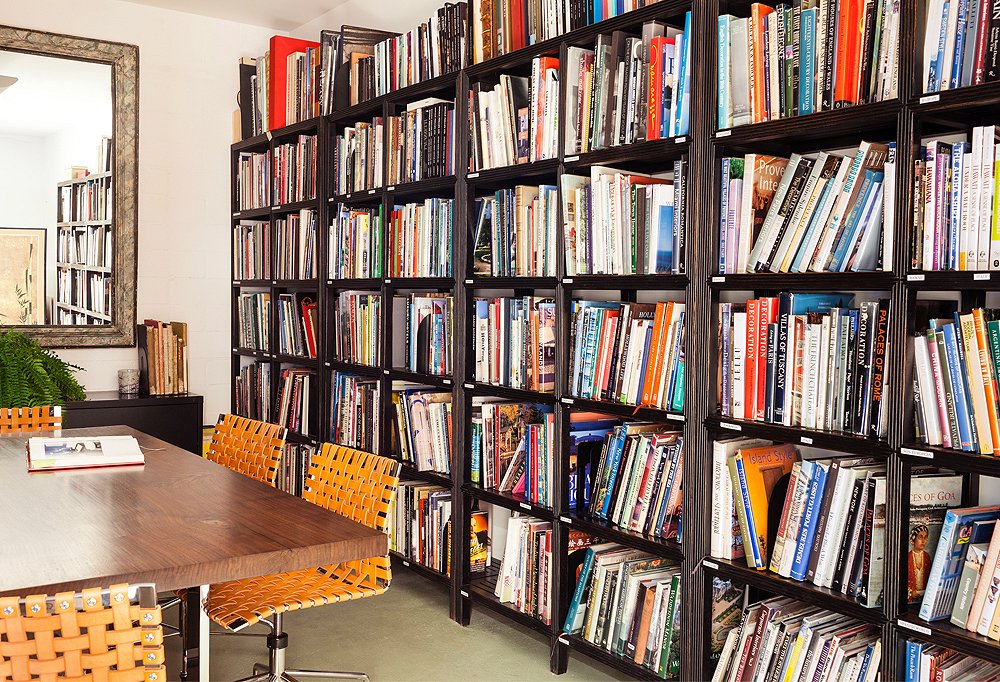
The office has a dedicated design-book library, where titles are organized by designer, architect, style, or region.
How does your library of design books come into play in the design process? Any personal favorites?
“Design books are quite helpful when I know of a specific image that I’m trying to find, especially when I’m trying to crystalize something in my head. Then sometimes it’s just a weird mood or idea that I’m looking for. Some of my favorites are Billy Baldwin’s books, Roomscapes: The Decorative Architecture of Renzo Mongiardino, and Horst: Interiors.”
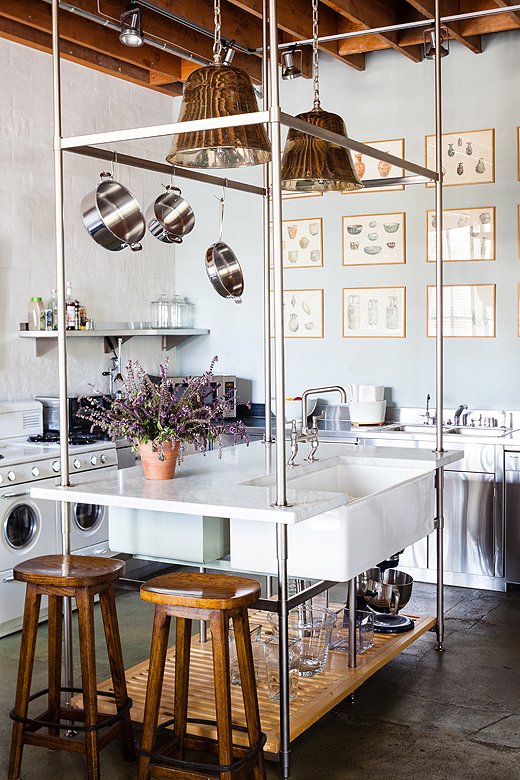
The well-appointed office kitchen features fixtures from Smith’s collaboration with the luxury plumbing manufacturer Kallista.
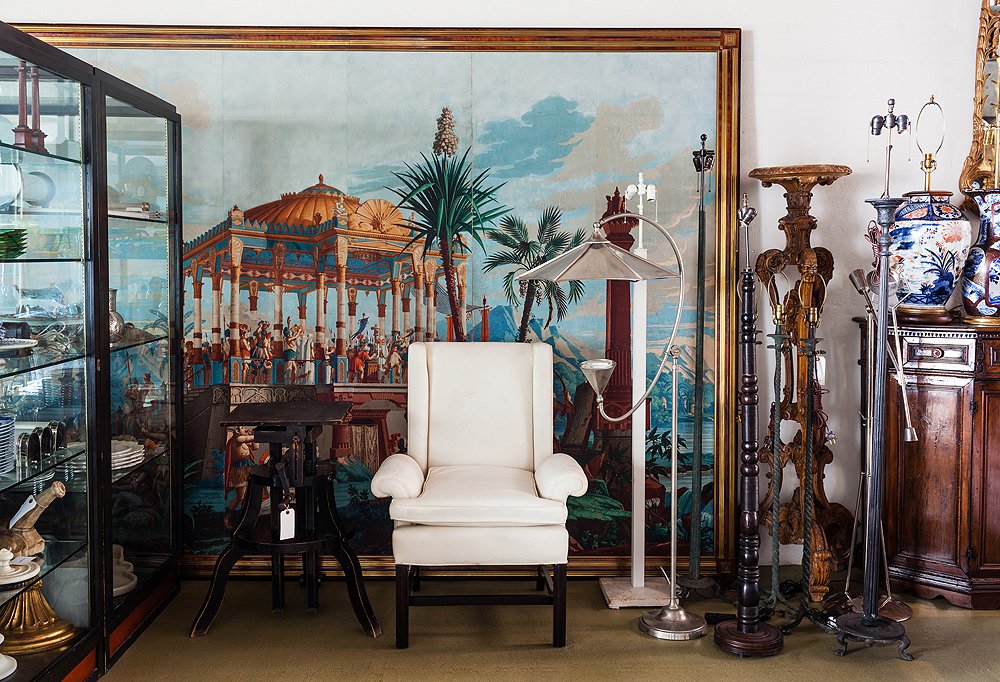
The “green room,” as it’s called around the office, functions as a staging area for pieces destined for one of Smith’s lucky clients.
Do you have any decorating advice to share?
“Just realize that it can take a long time, and try to be conscious of the value of trial and error. Houses are not clothes, and as much as we all want to change our rooms like we change clothes, you really can’t. Be mindful of the pursuit of that which is personal, and be brave. If you want a bright yellow living room, paint it bright yellow.”

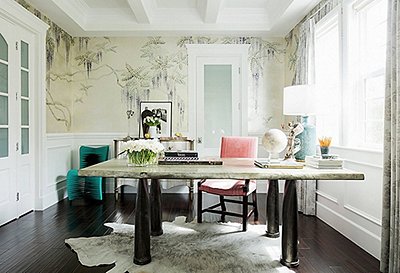
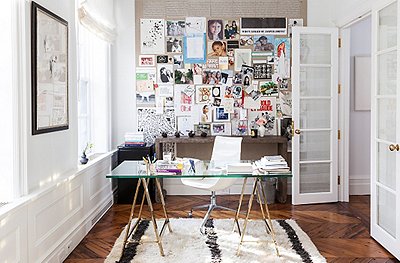
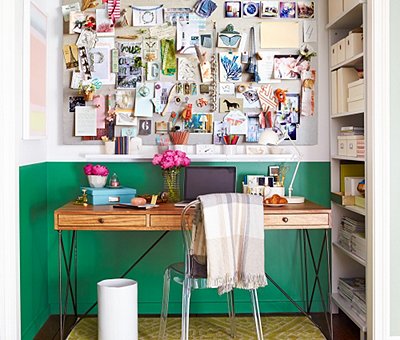
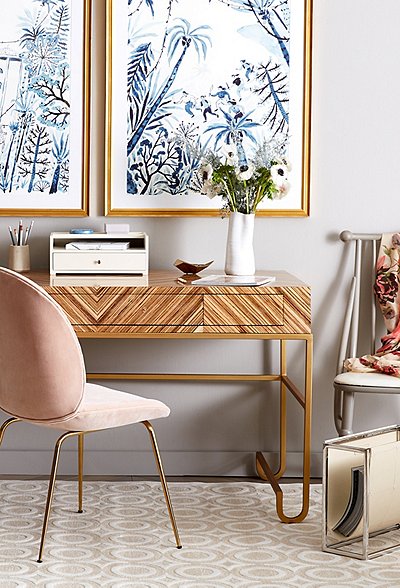
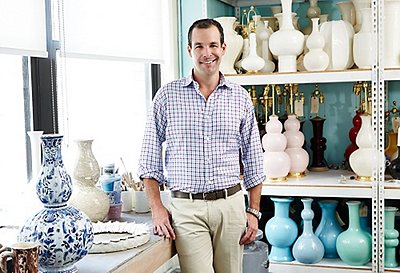
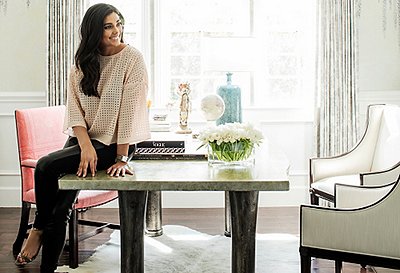
Join the Discussion